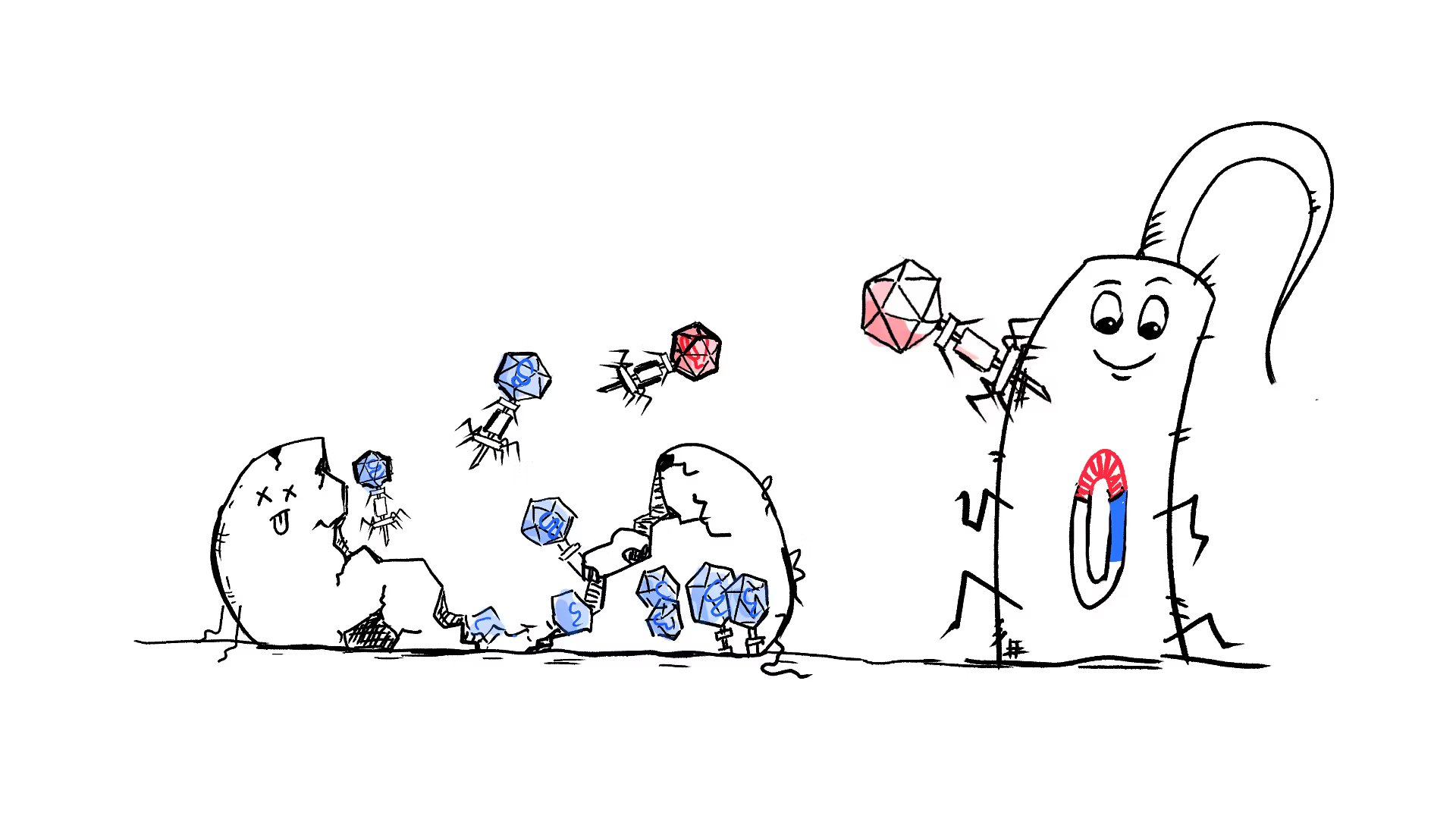
(Please first watch the previous video in the series: “Bacteriophage” )
https://members.drbeen.com/library/bacteriophage/SyK5B1Y-s?topic=Microbiology&subTopic=General
Remember: In a bacterial cell there are ribosomes, plasmids with genetic material, and chromosomes that are a closed circle shape.
Watch DrBeen video explaining these points
Transduction is a bacteriophage mediated genetic recombination (a DNA change) in bacteria.This mechanism of a bacterium’s genetic material transfering to another bacterium is called horizontal gene transfer (HGT), because the gene transfer is occurring in the same generation instead of from one generation to another.
Two types of gene transduction:
TC 3:35
- Generalized – mediated by virulent bacteriophages – which can take random pieces of DNA to another bacterium.
When a virulent phage infects a host bacterium, the phage DNA is transcribed, replicated and translated into capsids and enzymes. This destroys the host DNA often leaving fragments intact. If these pieces are a similar size to the phage DNA they can get accidentally packaged into the phage capsid head. After bacterial lysis (inevitable with virulent phages), the newly created phages escape the demised bacterium. A phage with the host DNA in its head can then infect another bacterium. If the foreign strand is homologous to the recipient genome, it can become incorporated and encode a protein with a characteristic the recipient didn’t have in the first place, like resistance to antibiotics.
In this case, because the phage has transferred bacterial DNA to the next bacterium, not phage DNA, the recipient will not succumb to lysis.
TC 8:46
- Specialized transduction – mediated by temperate bacteriophages. Once they infect a bacterium and transform into prophages (DNA incorporated in the chromosome of the bacterium) then are activated, they will transfer specific genes.
A prophage causes its host bacterium to become lysogenic (meaning it’s a ticking time bomb). When the bomb is detonated activating the prophage, its DNA is spliced out of the bacterial chromosome, and is then replicated, translated and packaged into a capsid. An error in splicing can cause a piece of bacterial DNA on one side or the other (not both) of the prophage DNA to be carried along and packaged with the phage DNA, resulting in a transfer of a piece of bacterial DNA to another bacteria. This could be a toxin like Escherichia coli or Corynebacterium Diphtheriae resulting in a lysogenic conversion from a non-pathogenic bacterium into a pathogenic one..
Because the wayward DNA is from a temperate (friendly) phage, it will not trigger lysis in the host bacterium.
See you in the next video: “Bacterial Genetic Recombination Via Transformation.

